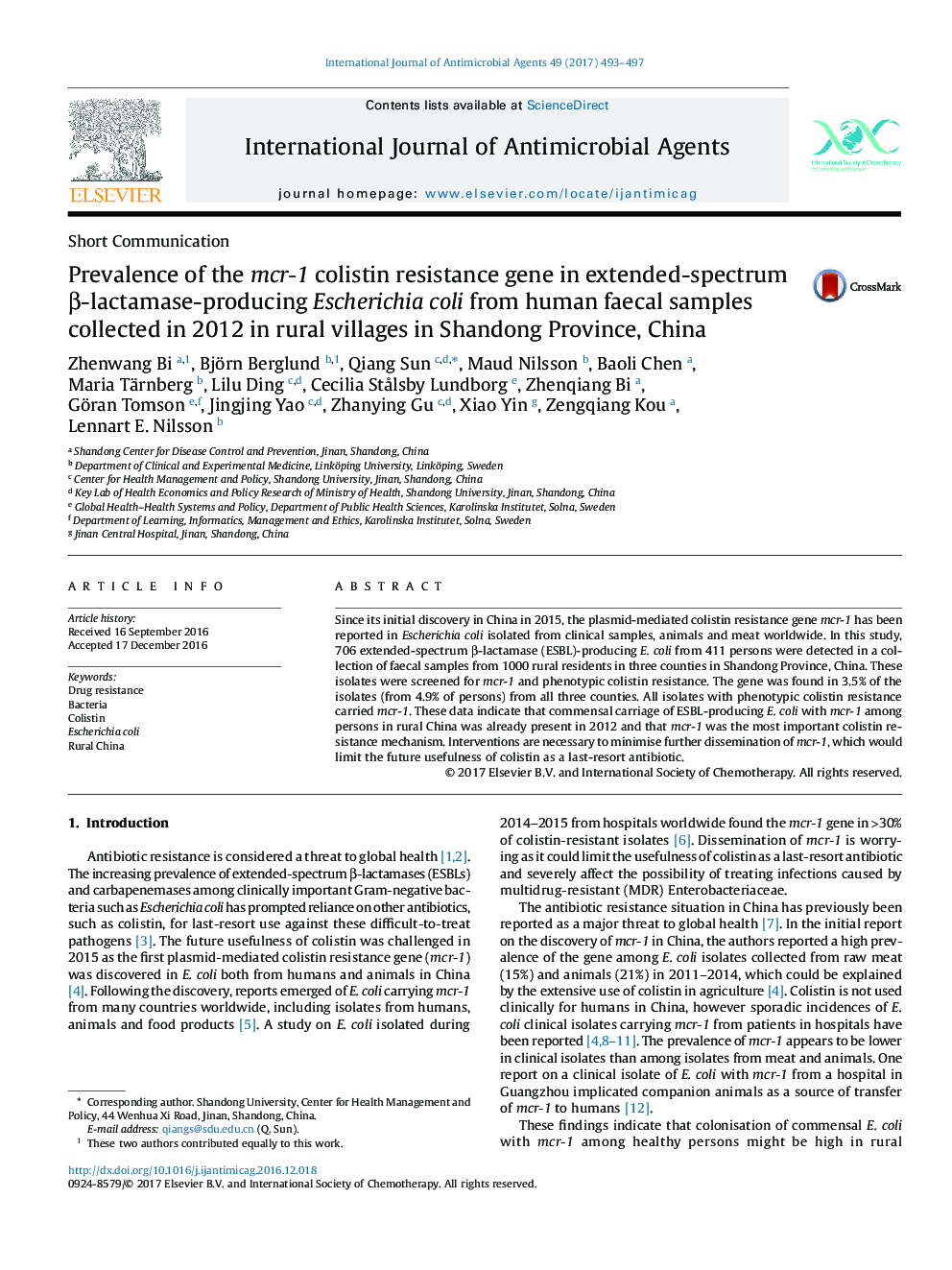| Article ID | Journal | Published Year | Pages | File Type |
|---|---|---|---|---|
| 5666835 | International Journal of Antimicrobial Agents | 2017 | 5 Pages |
â¢Commensal carriage of Escherichia coli with mcr-1 is present among persons in rural China.â¢Carriage of mcr-1 was not associated with socioeconomic factors.â¢Results implicate mcr-1 as the major colistin resistance mechanism in E. coli.
Since its initial discovery in China in 2015, the plasmid-mediated colistin resistance gene mcr-1 has been reported in Escherichia coli isolated from clinical samples, animals and meat worldwide. In this study, 706 extended-spectrum β-lactamase (ESBL)-producing E. coli from 411 persons were detected in a collection of faecal samples from 1000 rural residents in three counties in Shandong Province, China. These isolates were screened for mcr-1 and phenotypic colistin resistance. The gene was found in 3.5% of the isolates (from 4.9% of persons) from all three counties. All isolates with phenotypic colistin resistance carried mcr-1. These data indicate that commensal carriage of ESBL-producing E. coli with mcr-1 among persons in rural China was already present in 2012 and that mcr-1 was the most important colistin resistance mechanism. Interventions are necessary to minimise further dissemination of mcr-1, which would limit the future usefulness of colistin as a last-resort antibiotic.
